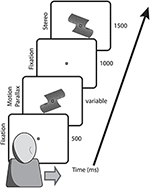

A sense organ receives the stimulus and encodes it as an electrical impulse. Sense organs and the neural pathways connecting them to various brain centres also play a vital role in this process. Thus, it is not possible to understand sensations without the AL and DL of different types of stimuli.īesides the stimulus characteristics, sensory processes also depend on other characteristics. The smallest difference in the value of two stimuli that is necessary to notice them as different is termed as difference limen (DL). These has to be some minimum difference between the value of those stimuli. In order to notice two stimuli are different from each other. Further, it is not possible to differentiate between all stimuli. Hence, it is assessed on the basis of a number of trials. Absolute limen is not a fixed point, instead it varies considerably across individuals and situations depending on the people’s organic conditions and their motivational states. The minimum value of a stimulus required to activate a given sensory system is called absolute limen (AL). In order to be noticed, a stimulus has to carry a minimum value or weight. A stimulus, to be noticed by a sensory receptor, has to be of an optimal intensity or magnitude. As human beings, we function within a limited range of stimulation. Similarly, our ears cannot hear very faint or very loud sounds. For example, our eyes cannot see things which are very dim or very bright. However, all sense organs function with certain limitations. Each sense organ is highly specialised for dealing with a particular kind of information. Different sense organs deal with different forms of stimuli and serve different purposes. Our sense organs provide us with first hand information about our external or internal world. Preparatory set generates mental state to act in a certain way and readiness of the individual to respond to one kind of stimuli and not to others. Objects or events, which appear interesting, are readily attended by individuals, similarly one pays quick attention to certain objects or events to which he is favourably disposed. Cognitive factors include factor's lik)e interest, attitude, and preparatory set. A student taking an examination is likely to focus on a teacher’s instructions more than other students. When a person is hungry, he notices even a faint smell of food. Motivational factors relate to our biological or social needs. These may be divided into two main categories-motivational factors and cognitive factors. (ii) Internal factors lie within the individual. Sudden and intense stimuli have a wonderful capacity to draw attention. Similarly, rhythmic auditory stimuli are more readily attended to than verbal narrations. It has been observed that human photographs are more likely to be attended to than the photographs of inanimate objects. Stimuli, which are novel and moderately complex, also easily get into ones focus. Large, bright, and moving stimuli easily catch attention. The size, intensity, and motion of stimuli are considered as important determinants of attention. (i) External factors are related to the features of stimuli. All these factors are classified as external and internal factors. These factors generally relate to the characteristics of stimuli and the characteristics of individuals. There are a number of factors that determine the selective attention.

Selective attention is concerned mainly with the selection of a limited number of stimuli or objects from a large number of stimuli. White has the highest degree of brightness, whereas black has the lowest degree. White and black represent the top and bottom of the brightness dimension. It varies across both chromatic and achromatic colours. The colour grey is completely unsaturated.īrightness is the perceived intensity of light. As we mix different wavelengths, the saturation decreases. The light of single wavelength (monochromatic) appears to be highly saturated. Saturation is a psychological attribute that refers to the relative amount of hue of a surface or object. Achromatic colours like black, white or grey are not characterised by hues. For example, blue has a wavelength of about 465 nm. Hue varies with wavelength, and each colour is identified with a specific wavelength. It refers to the name of the colour, e.g., red, blue, and green. There are three basic dimensions of colour-hue, saturation, and brightness. A person with normal colour vision can distinguish more than seven million different shades of colour. A person’s ability to distinguish different shades of colour is termed as colour vision.


 0 kommentar(er)
0 kommentar(er)
